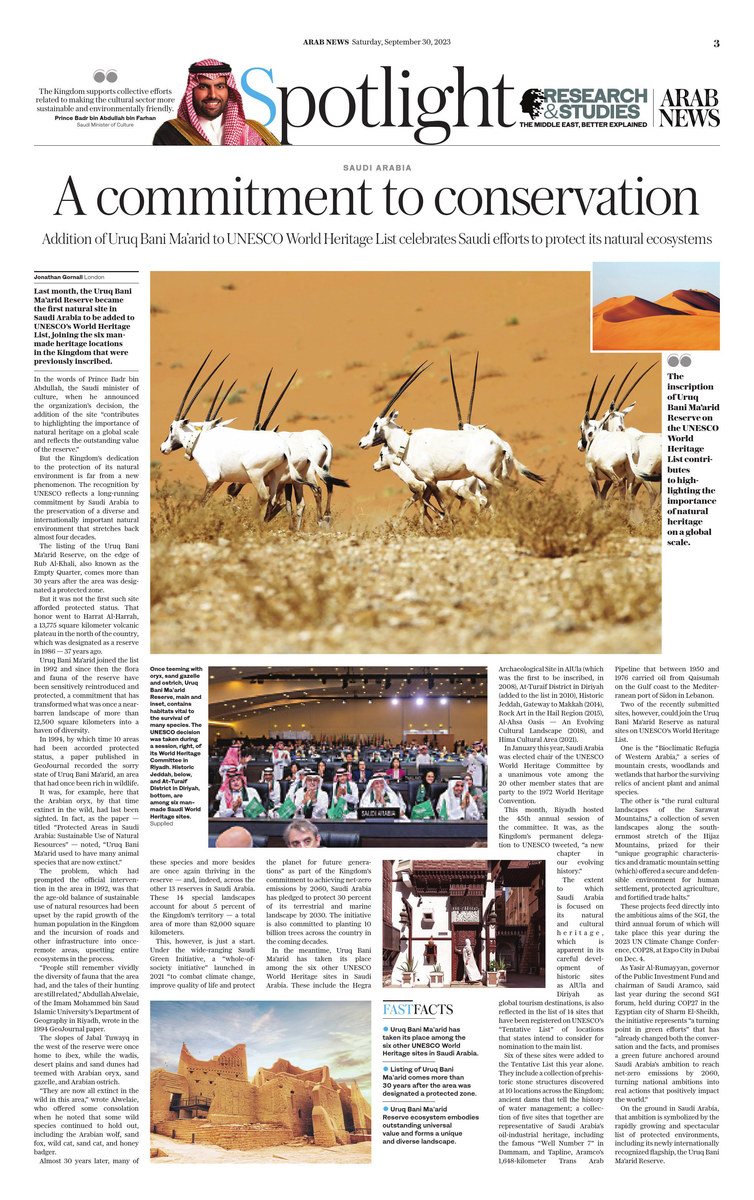LONDON: Uruq Bani Ma’arid Reserve has become the first natural site in Saudi Arabia to be added to UNESCO’s World Heritage List, joining the six man-made heritage locations in the Kingdom that were previously inscribed.
In the words of Prince Badr bin Abdullah, the Saudi minister of culture, when he announced the organization’s on September 20, the addition of the site “contributes to highlighting the importance of natural heritage on a global scale and reflects the outstanding value of the reserve.”
But the Kingdom’s dedication to the protection of its natural environment is far from a new phenomenon. The recognition by UNESCO reflects a long-running commitment by Saudi Arabia to the preservation of a diverse and internationally important natural environment that stretches back almost four decades.
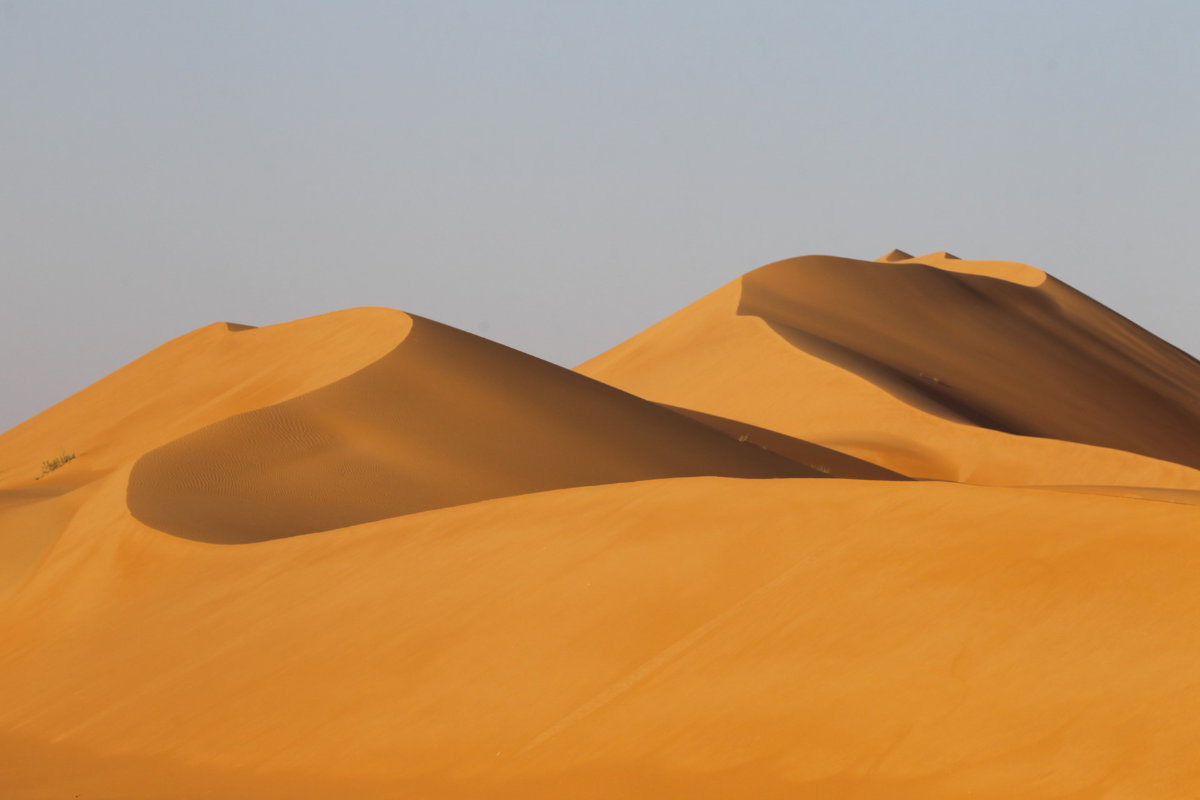
Spanning 12,765 square kilometers, Uruq Bani Ma’arid Reserve lies on the western edge of the Empty Quarter, the world’s largest continuous sand sea. The desert’s diverse topography creates a variety of wildlife habitats. (Supplied)
The listing of the Uruq Bani Ma’arid Reserve, on the edge of Rub Al-Khali, also known as the Empty Quarter, comes more than 30 years after the area was designated a protected zone.
But it was not the first such site afforded protected status. That honor went to Harrat Al-Harrah, a 13,775 square kilometer volcanic plateau in the north of the country, which was designated as a reserve in 1986 — 37 years ago.
Uruq Bani Ma’arid joined the list in 1992 and since then the flora and fauna of the reserve have been sensitively reintroduced and protected, a commitment that has transformed what was once a near-barren landscape of more than 12,500 square kilometers into a haven of diversity.
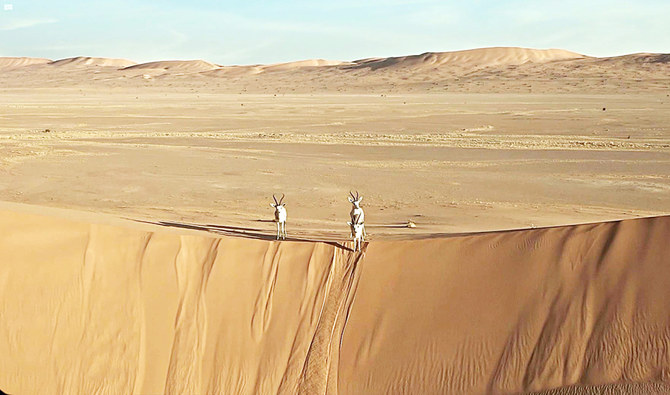
Uruq Bani Ma’arid Reserve contains habitats vital to the survival of many species. (Supplied)
In 1994, by which time 10 areas had been accorded protected status, a paper published in GeoJournal recorded the sorry state of Uruq Bani Ma’arid, an area that had once been rich in wildlife.
It was, for example, here that the Arabian oryx, by that time extinct in the wild, had last been sighted. In fact, as the paper — titled “Protected Areas in Saudi Arabia: Sustainable Use of Natural Resources” — noted, “Uruq Bani Ma’arid used to have many animal species that are now extinct.”
FASTFACTS
Uruq Bani Ma’arid has taken its place among the six other UNESCO World Heritage sites in Saudi Arabia.
Listing of Uruq Bani Ma’arid comes more than 30 years after the area was designated a protected zone.
Uruq Bani Ma’arid Reserve ecosystem embodies outstanding universal value and forms a unique and diverse landscape.
The problem, which had prompted the official intervention in the area in 1992, was that the age-old balance of sustainable use of natural resources had been upset by the rapid growth of the human population in the Kingdom and the incursion of roads and other infrastructure into once-remote areas, upsetting entire ecosystems in the process.
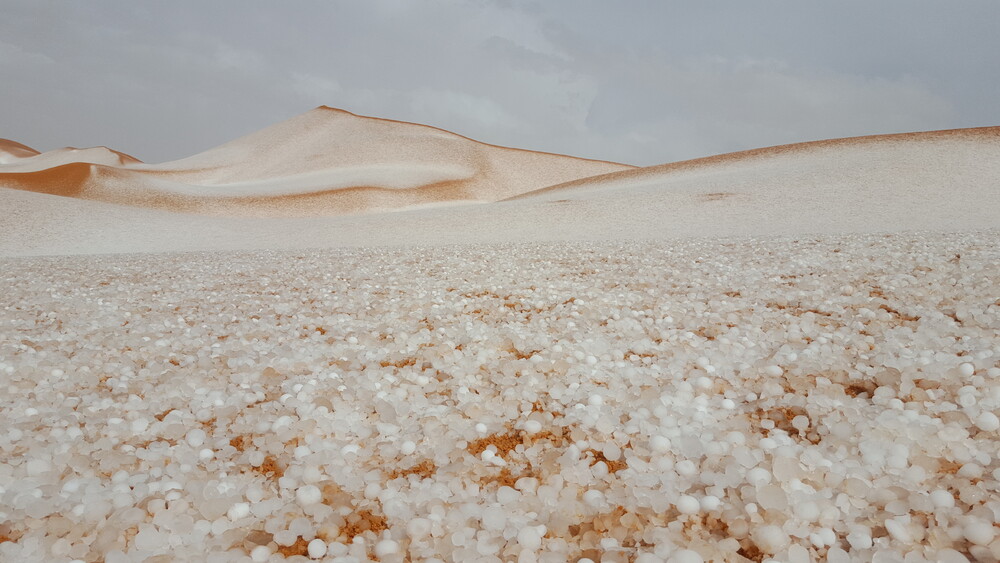
This picture titled "Hail covering sand dunes" was part of the Kingdom's application for the inclusion of "Uruq Bani Ma’arid" in the UNESCO World Heritage List. (Photo by Hamad Al Qahtani / National Center for Wildlife)
“People still remember vividly the diversity of fauna that the area had, and the tales of their hunting are still related,” Abdullah Alwelaie, of the Imam Mohammed bin Saud Islamic University’s Department of Geography in Riyadh, wrote in the 1994 GeoJournal paper.
“They are now all extinct in the wild in this area,” wrote Alwelaie, who offered some consolation when he noted that some wild species continued to hold out, including the Arabian wolf, sand fox, wild cat, sand cat, and honey badger.
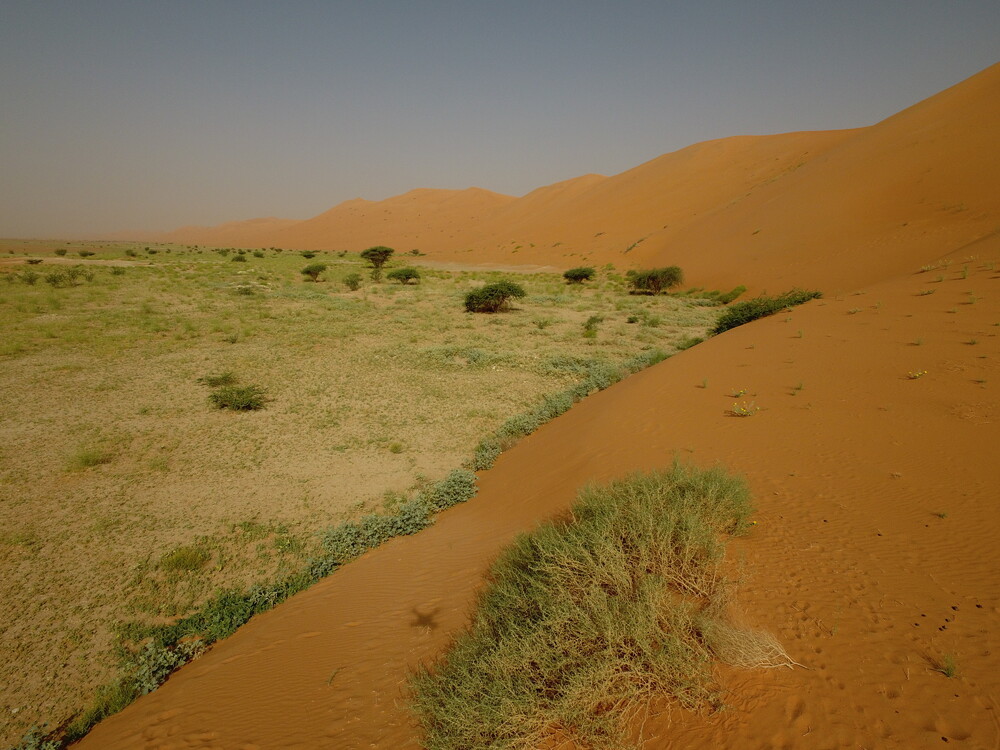
Titled "Inter-dunal corridor during spring," this picture was part of the Kingdom's application for the inclusion of "Uruq Bani Ma’arid" in the UNESCO World Heritage List. (Photo by Muhammad Al Yousifi)
The slopes of Jabal Tuwayq in the west of the reserve were once home to ibex, while the wadis, desert plains and sand dunes had teemed with Arabian oryx, sand gazelle, and Arabian ostrich.
Almost 30 years later, many of these species and more besides are once again thriving in the reserve — and, indeed, across the other 13 reserves in Saudi Arabia. These 14 special landscapes account for about five percent of the Kingdom’s territory — a total area of more than 82,000 square kilometers.
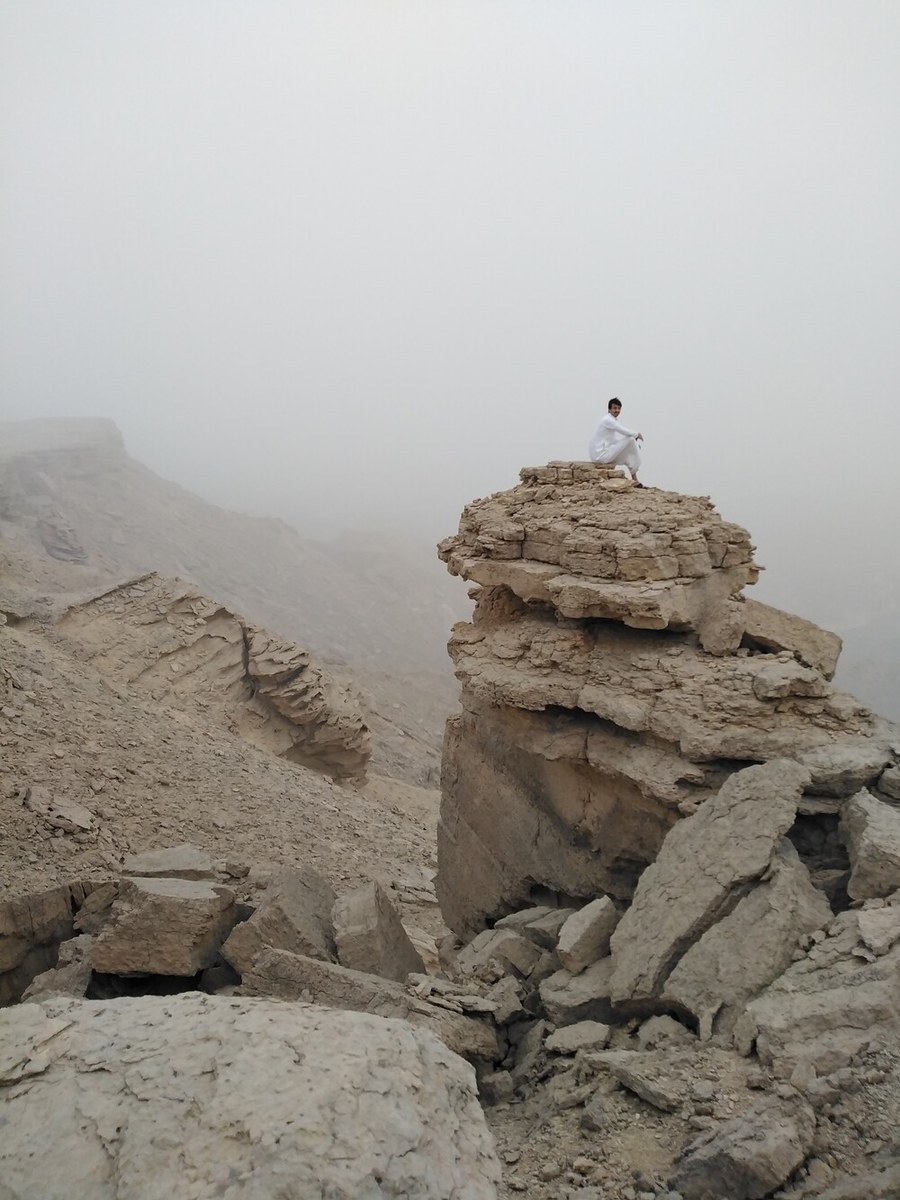
Titled "Edge of Tuwayq Escarpment," this picture was part of the Kingdom's application for the inclusion of "Uruq Bani Ma’arid" in the UNESCO World Heritage List. (Photo by Tarek Abulhawa / National Center for Wildlife)
This, however, is just a start. Under the wide-ranging Saudi Green Initiative, a “whole-of-society initiative” launched in 2021 “to combat climate change, improve quality of life and protect the planet for future generations” as part of the Kingdom’s commitment to achieving net-zero emissions by 2060, Saudi Arabia has pledged to protect 30 percent of its terrestrial and marine landscape by 2030. The initiative is also committed to planting 10 billion trees across the country in the coming decades.
In the meantime, Uruq Bani Ma’arid has taken its place among the six other UNESCO World Heritage sites in Saudi Arabia. These include the Hegra Archaeological Site in AlUla (which was the first to be inscribed, in 2008), At-Turaif District in Diriyah (added to the list in 2010), Historic Jeddah, Gateway to Makkah (2014), Rock Art in the Hail Region (2015), Al-Ahsa Oasis — An Evolving Cultural Landscape (2018), and Ḥima Cultural Area (2021).
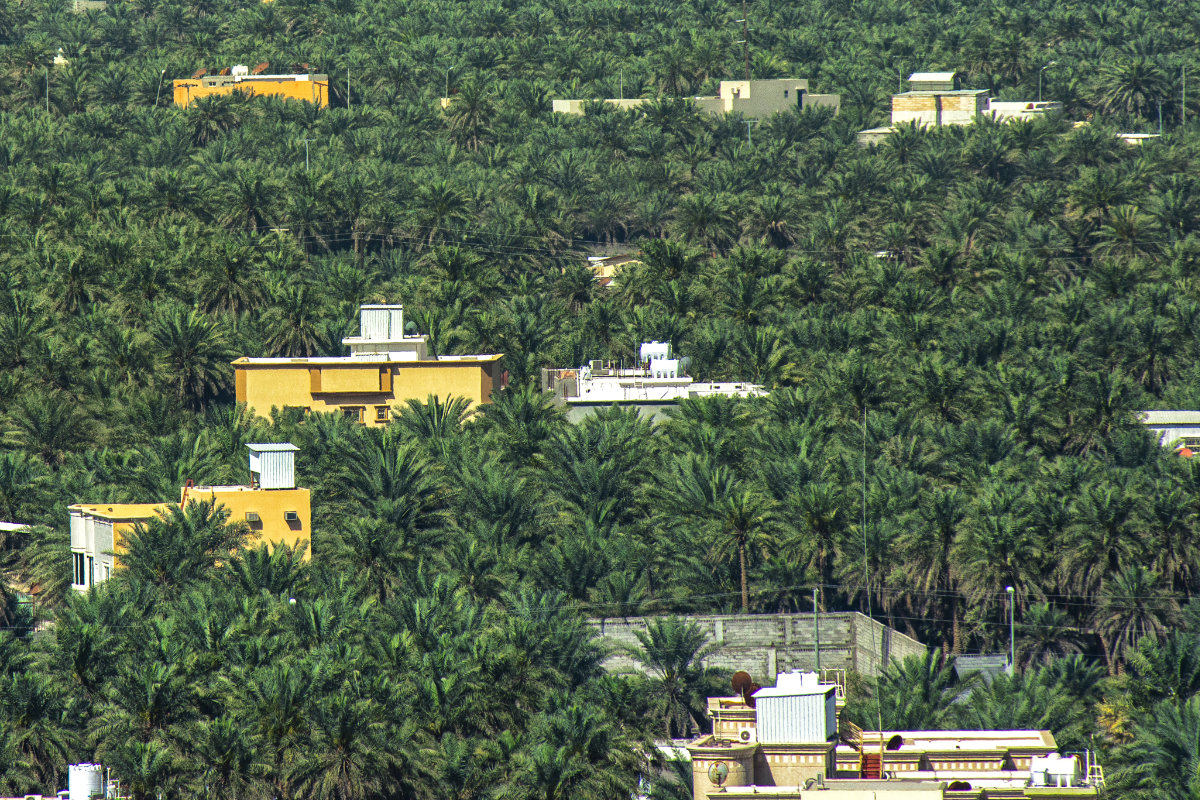
Al-Ahsa Oasis in the Eastern Province of Saudi Arabia. (Ministry of Culture photo)
In January this year, Saudi Arabia was elected chair of the UNESCO World Heritage Committee by a unanimous vote among the 20 other member states that are party to the 1972 World Heritage Convention.
This month, Riyadh hosted the 45th annual session of the committee. It was, as the Kingdom’s permanent delegation to UNESCO tweeted, “a new chapter in our evolving history.”
The extent to which Saudi Arabia is focused on its natural and cultural heritage, which is apparent in its careful development of historic sites as AlUla and Diriyah as global tourism destinations, is also reflected in the list of 14 sites that have been registered on UNESCO’s “Tentative List” of locations that states intend to consider for nomination to the main list.
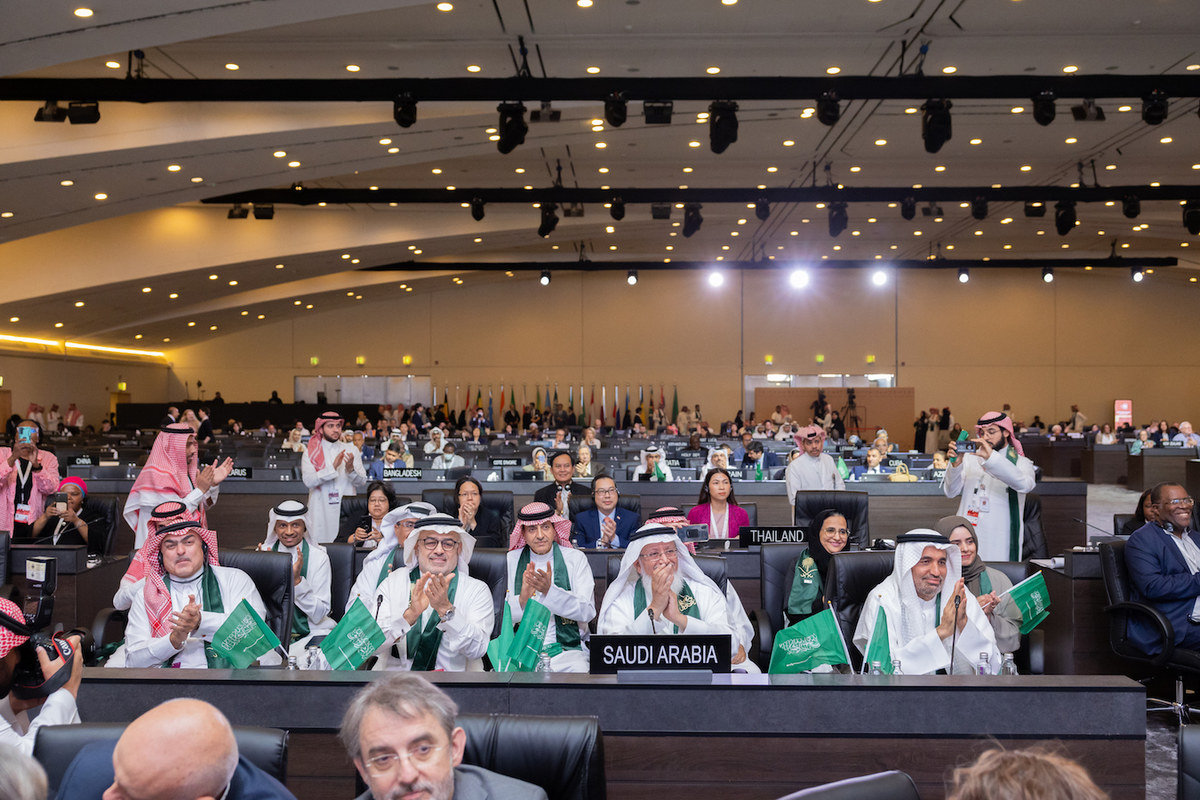
Saudi Arabia’s Uruq Bani Ma’arid Reserve was officially added to the UNESCO World Heritage List during the extended 45th session of the UNESCO World Heritage Committee held in Riyadh between Sept. 10-25. (Supplied)
Six of these sites were added to the Tentative List this year alone. They include a collection of prehistoric stone structures discovered at 10 locations across the Kingdom; ancient dams that tell the history of water management; a collection of five sites that together are representative of Saudi Arabia’s oil-industrial heritage, including the famous “Well Number 7” in Dammam, and Tapline, Aramco’s 1,648-kilometer Trans Arab Pipeline that between 1950 and 1976 carried oil from Qaisumah on the Gulf coast to the Mediterranean port of Sidon in Lebanon.
Two of the recently submitted sites, however, could join the Uruq Bani Ma’arid Reserve as natural sites on UNESCO’s World Heritage List.
One is the “Bioclimatic Refugia of Western Arabia,” a series of mountain crests, woodlands and wetlands that harbor the surviving relics of ancient plant and animal species.
The other is “the rural cultural landscapes of the Sarawat Mountains,” a collection of seven landscapes along the southernmost stretch of the Hijaz Mountains, prized for their “unique geographic characteristics and dramatic mountain setting (which) offered a secure and defensible environment for human settlement, protected agriculture, and fortified trade halts.”
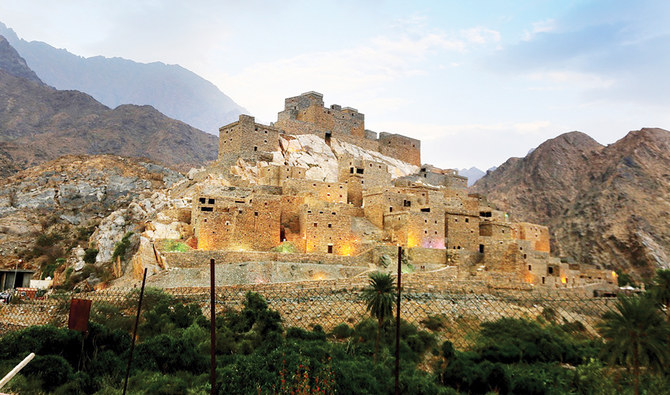
Thi Ain Heritage Village in Saudi Arabia’s southwestern Al-Baha province dates back hundreds of years. (Susan Baaghil/Saudi Tourism/File)
These projects feed directly into the ambitious aims of the SGI, the third annual forum of which will take place this year during the 2023 UN Climate Change Conference, COP28, at Expo City in Dubai on Dec. 4.
As Yasir Al-Rumayyan, governor of the Public Investment Fund and chairman of Saudi Aramco, said last year during the second SGI forum, held during COP27 in the Egyptian city of Sharm El-Sheikh, the initiative represents “a turning point in green efforts” that has “already changed both the conversation and the facts, and promises a green future anchored around Saudi Arabia’s ambition to reach net-zero emissions by 2060, turning national ambitions into real actions that positively impact the world.”
On the ground in Saudi Arabia, that ambition is symbolized by the rapidly growing and spectacular list of protected environments, including its newly internationally recognized flagship, the Uruq Bani Ma’arid Reserve.
